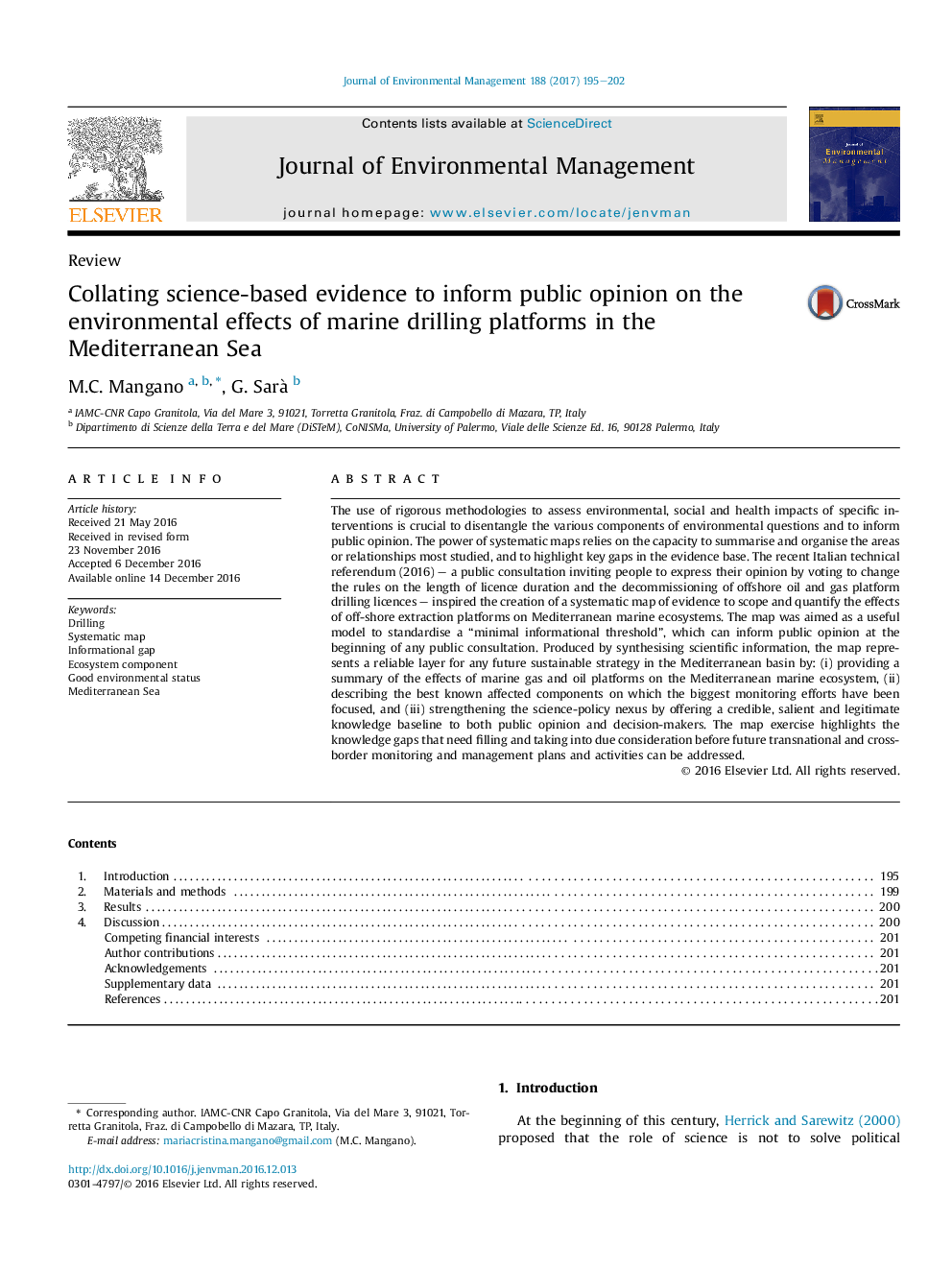| Article ID | Journal | Published Year | Pages | File Type |
|---|---|---|---|---|
| 5117137 | Journal of Environmental Management | 2017 | 8 Pages |
â¢We developed a systematic map (SM) as a useful model to standardise a “minimal informational threshold”.â¢SM allowed to scope and summarise the existing evidence on the effects of off-shore extraction platforms on the Mediterranean marine ecosystem.â¢SM will represent a useful layer for future sustainable strategies.â¢SM allows to grasp the effects on the ecosystem health, depict the most affected components, inform the public opinion.â¢SM highlights knowledge gaps to fill to address the future transnational and cross-border monitoring and management plans.
The use of rigorous methodologies to assess environmental, social and health impacts of specific interventions is crucial to disentangle the various components of environmental questions and to inform public opinion. The power of systematic maps relies on the capacity to summarise and organise the areas or relationships most studied, and to highlight key gaps in the evidence base. The recent Italian technical referendum (2016) - a public consultation inviting people to express their opinion by voting to change the rules on the length of licence duration and the decommissioning of offshore oil and gas platform drilling licences - inspired the creation of a systematic map of evidence to scope and quantify the effects of off-shore extraction platforms on Mediterranean marine ecosystems. The map was aimed as a useful model to standardise a “minimal informational threshold”, which can inform public opinion at the beginning of any public consultation. Produced by synthesising scientific information, the map represents a reliable layer for any future sustainable strategy in the Mediterranean basin by: (i) providing a summary of the effects of marine gas and oil platforms on the Mediterranean marine ecosystem, (ii) describing the best known affected components on which the biggest monitoring efforts have been focused, and (iii) strengthening the science-policy nexus by offering a credible, salient and legitimate knowledge baseline to both public opinion and decision-makers. The map exercise highlights the knowledge gaps that need filling and taking into due consideration before future transnational and cross-border monitoring and management plans and activities can be addressed.
Graphical abstractDownload high-res image (220KB)Download full-size image
